Pollution tolerant planting scheme
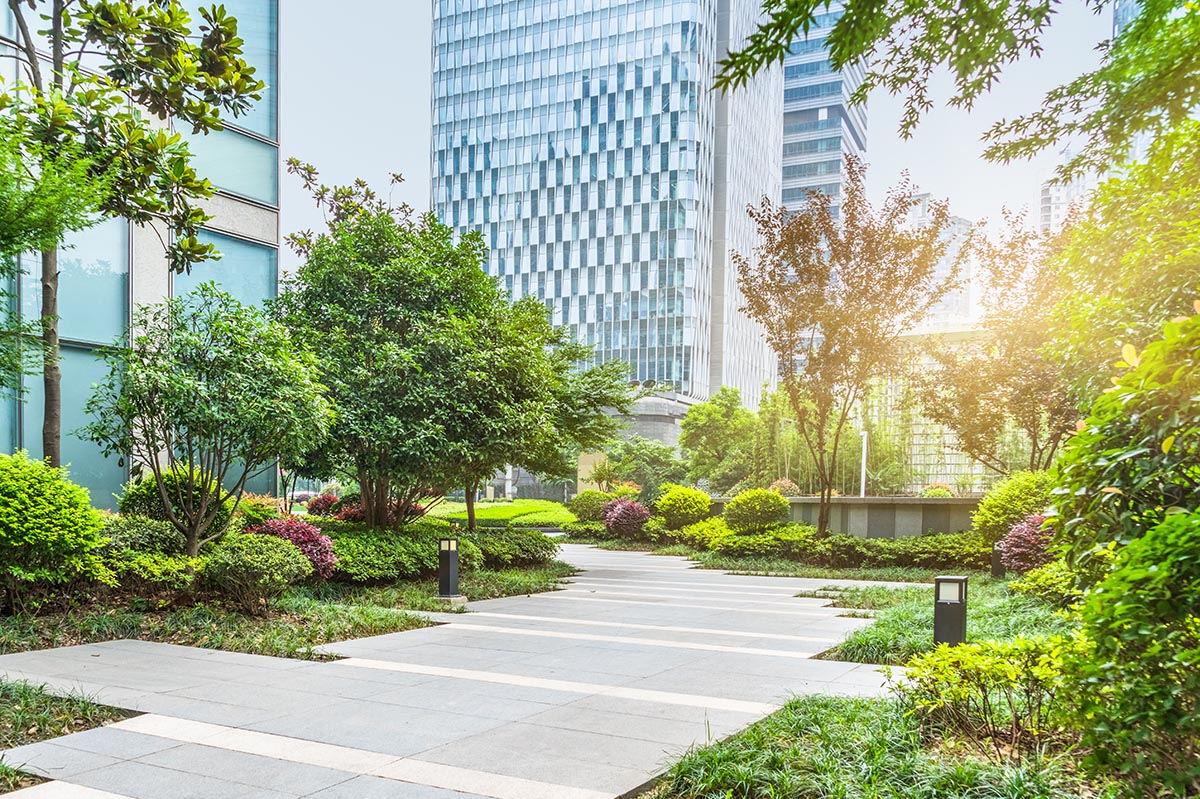
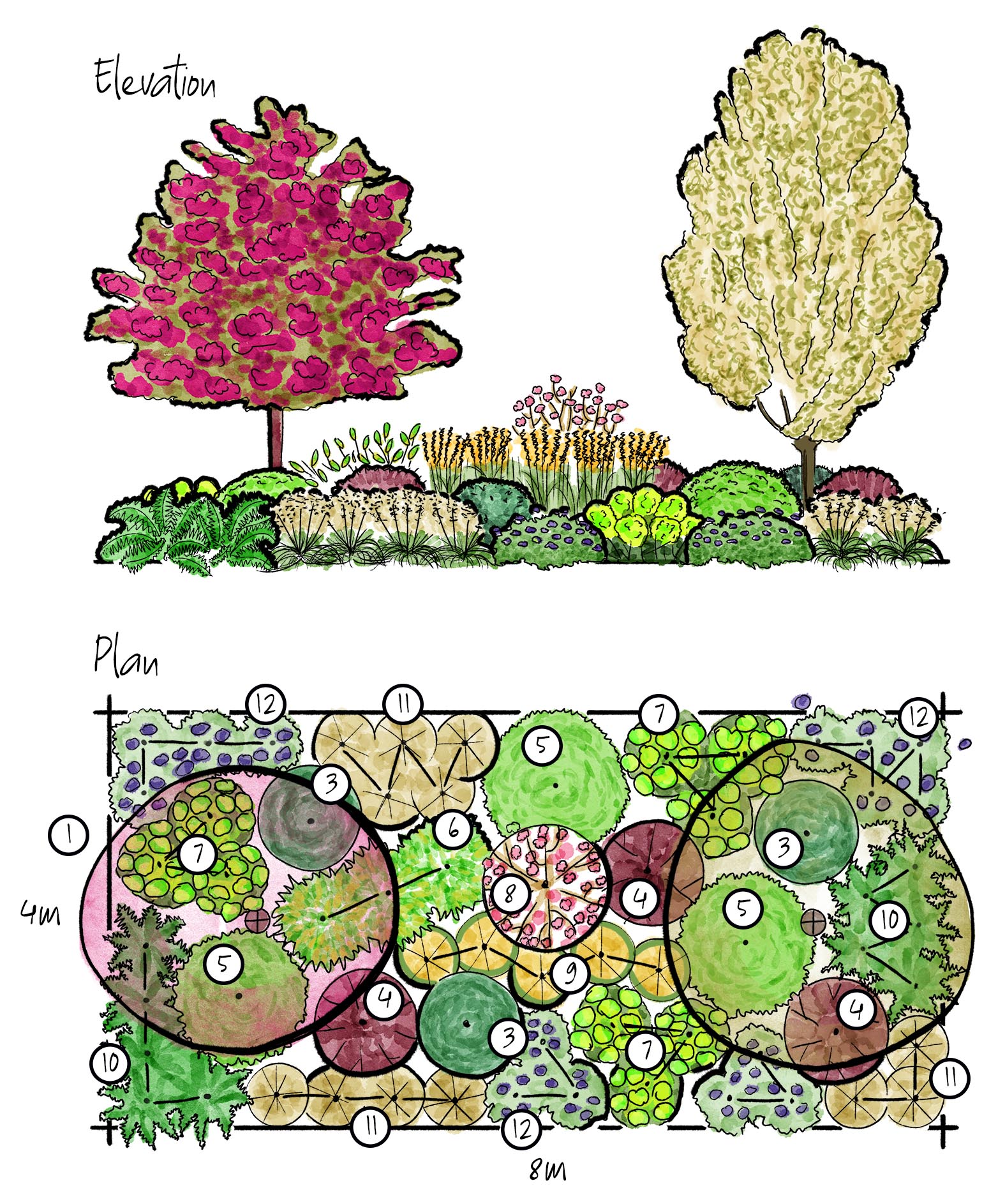
Pollution tolerant planting scheme
There is no disputing that urban greening, and the addition of plants and trees to our towns and cities, improves the environment from both an aesthetic and ecological perspective.
The airborne particulates, heavy metals, chemicals, salt, and dust that are prevalent in urban areas and along busy roads can stifle photosynthesis, contaminate soil and prevent plants from flourishing. Urban soil quality is often poor and the prevalence of hard surfaces can lead to flash flooding when there is heavy rain. There are certain plants that can, not only withstand, but thrive in these challenging conditions.
Trees and plants do more than store carbon and absorb pollution from the air. Other benefits to incorporating planted areas within urban environments include the cooling effect that shade from trees has on surface temperatures and ground stabilisation as planted areas help to prevent flooding by absorbing water and reducing soil erosion. Shrubs and trees can offer noise reduction qualities and provide visual screening. Plants offer a source of food and shelter to birds, invertebrates and mammals and, by connecting areas of planting, we provide ‘wildlife corridors’ for safe migration. Local communities benefit hugely from green spaces as they offer opportunities for leisure and are proven to boost mental health and wellbeing.
Urban planners are embracing their potential to transform our concrete jungles and pollution-tolerant species are the key to successfully creating green oases. By integrating these robust plants into urban landscapes, we not only enhance the beauty of the surroundings but also take a significant step towards creating healthier, more sustainable cities for generations to come.
1 Crataegus media ‘Paul’s Scarlet’ 2Pyrus calleryana ‘Chanticleer’ 3 Taxus baccata (80cm balls) 4 Berberis thunbergii f. atropurpurea 5 Symphoricarpos x chenaultii ‘Hancock’ 6 Cornus sanguinea ‘Midwinter Fire’ 7 Euphorbia characias subsp. wulfennii 8 Viburnum x bodnantense ‘Dawn’ 9 Calamagrostis x acutiflora ‘Karl Foerster’ 10 Polystichum setiferum 11 Deschampsia cespitosa 12 Geranium ‘Rozanne’

①
Crataegus media ‘Paul’s Scarlet’
A rounded, thorny, deciduous small tree that has lobed, mid-green leaves with lighter undersides and an abundance of double, deep pink, spring flowers. In autumn, its foliage transitions to yellow and bronze. Can tolerate urban pollution, exposed and coastal locations.

②
Pyrus calleryana ‘Chanticleer’
A medium-sized, conical tree with ovate dark green leaves which transition to a striking orange-red in autumn. In spring, clusters of white flowers bloom, which are followed by small brown fruits. Often one of the last deciduous trees to lose its foliage, making it great for screening. Tolerant of atmospheric pollution so ideal for urban locations.

③
Taxus baccata (80cm balls)
Bushy evergreen with very dark green leaves. Insignificant flowers are followed by fleshy red fruits on female plants. Forms a dense formal hedge and can be clipped into topiary shapes.

④
Berberis thunbergii f. atropurpurea
A deciduous, low-growing, bushy shrub with red-purple foliage; red-tinted, pale yellow spring flowers; and red berries in autumn. Provides fantastic autumn colour as its leaves turn a deep red before they fall. Ideal as a specimen plant or informal hedge. Tolerant of pollution and salt-laden air, so perfect for coastal or urban locations.

⑤
Symphoricarpos x chenaultii ‘Hancock’
A low-growing, spreading, deciduous shrub with rooting branches, small leaves and tiny white flowers that are followed by clusters of white berries with red speckles which last into winter. Can be invasive if growth is not restricted. Good for banks and slopes. Its flowers are loved by bees and butterflies, whilst birds enjoy its berries.
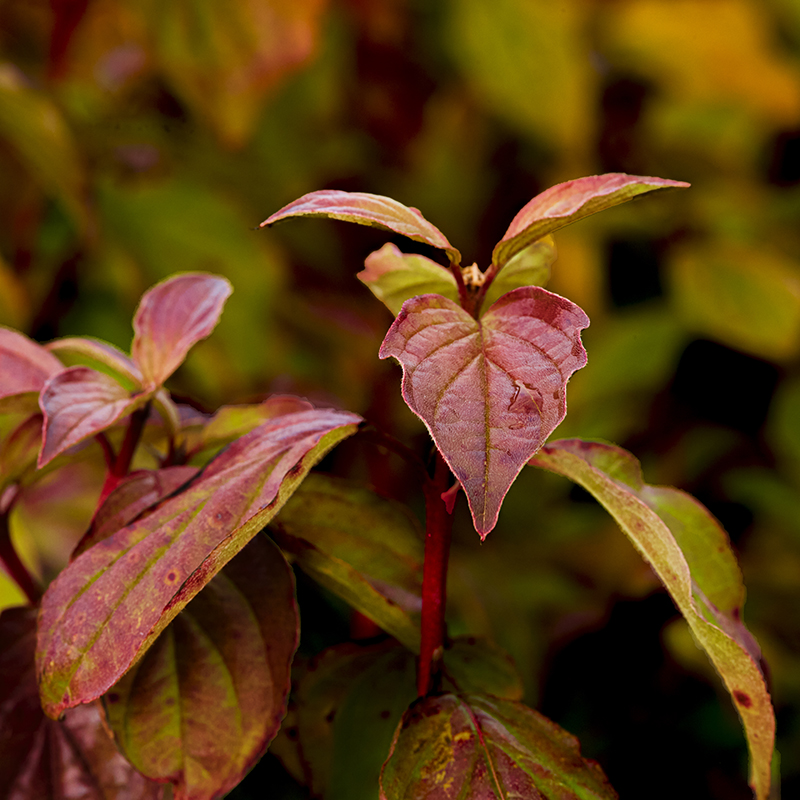
⑥
Cornus sanguinea ‘Midwinter Fire’
A spreading, deciduous shrub with flame coloured stems, which mature to orange-yellow in autumn. It has oval, green foliage, cream-white flowers in late spring to summer, and black autumn berries. Provides showstopping winter colour.
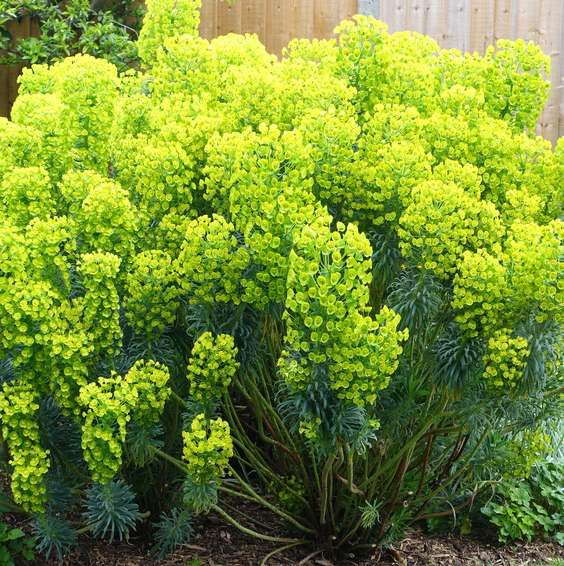
⑦
Euphorbia characias subsp. wulfennii
An upright shrub with heads of vibrant, lime green flowers and oblong, grey-green foliage. Brings structure to landscapes with its natural, rounded shape and architectural leaves. Native to the Mediterranean and is very drought tolerant once established.
.
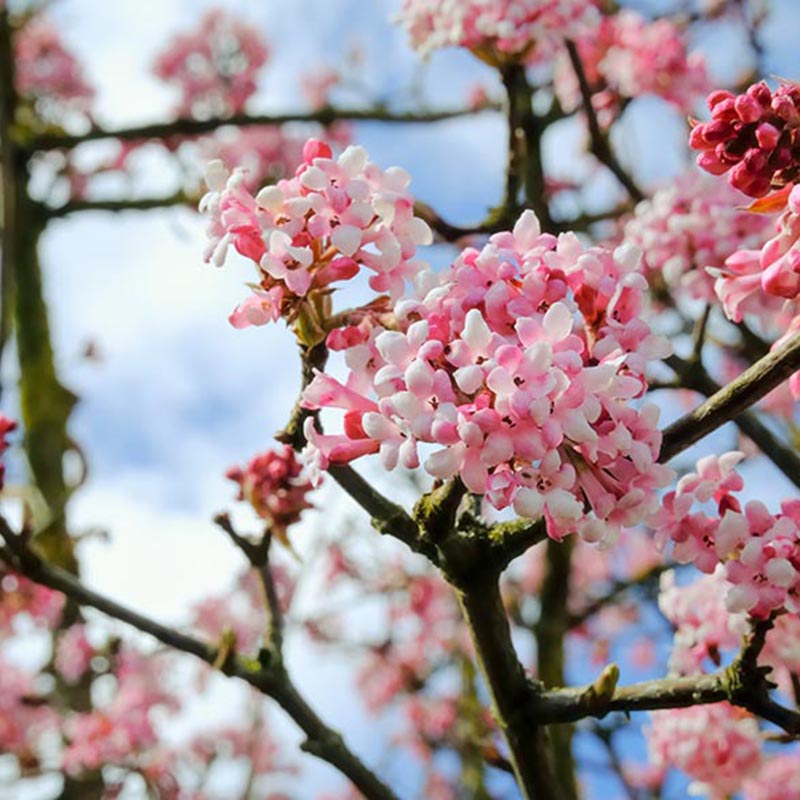
⑧
Viburnum x bodnantense ‘Dawn’
A tall, deciduous shrub with dark green, ovate leaves and clusters of fragrant pink flowers that appear on bare branches from November. Provides excellent winter flowers which are highly appreciated by bees and other pollinators. Plant near entrances or walkways to appreciate the scent in winter.

⑨
Calamagrostis x acutiflora ‘Karl Foerster’
A clump-forming, upright grass with arching leaves which emerge in early spring and feathery plumes in summer that later fade to buff in autumn. Looks striking when planted in groups. The height and erect habit make this grass ideal for forming a screen and it brings great winter interest when its stems catch the frost.
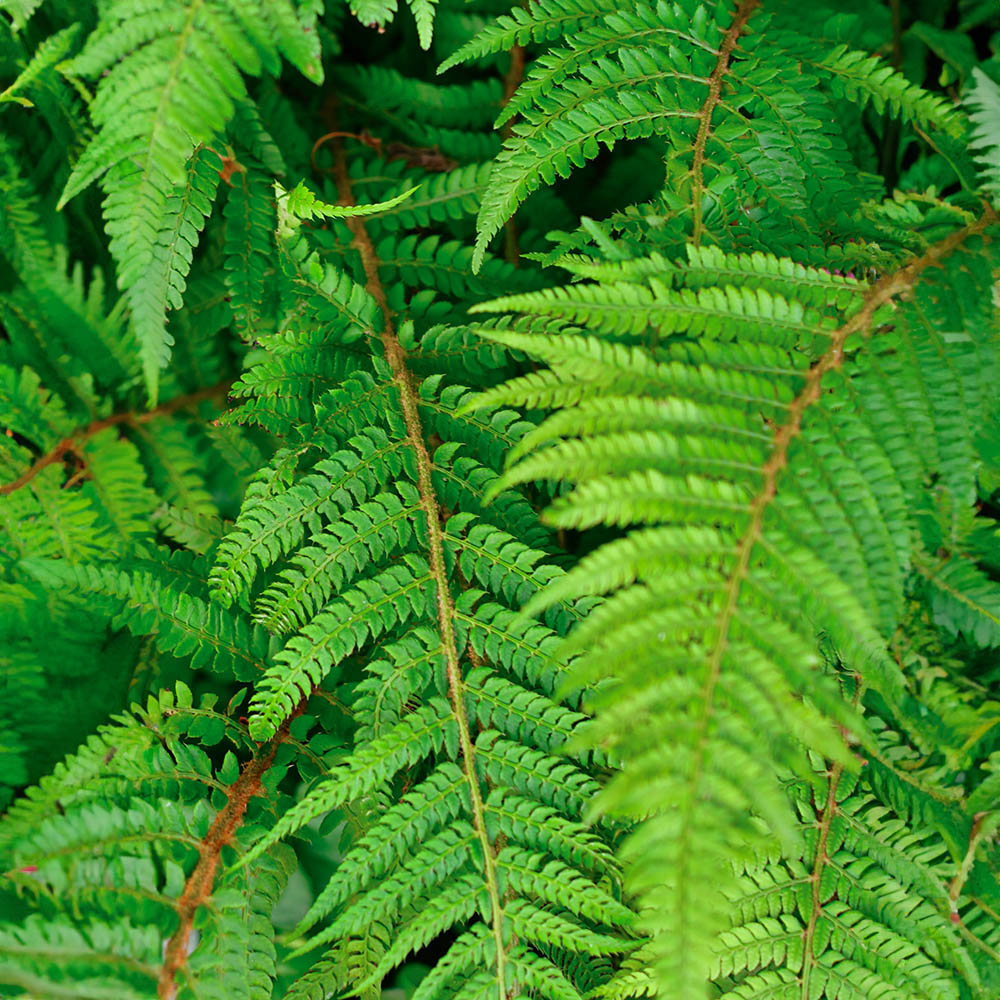
⑩
Polystichum setiferum
A large, native, evergreen, tufted fern with dark green, softly arching fronds and orange-brown stalks. The fronds emerge upright in habit until they unfurl and open.
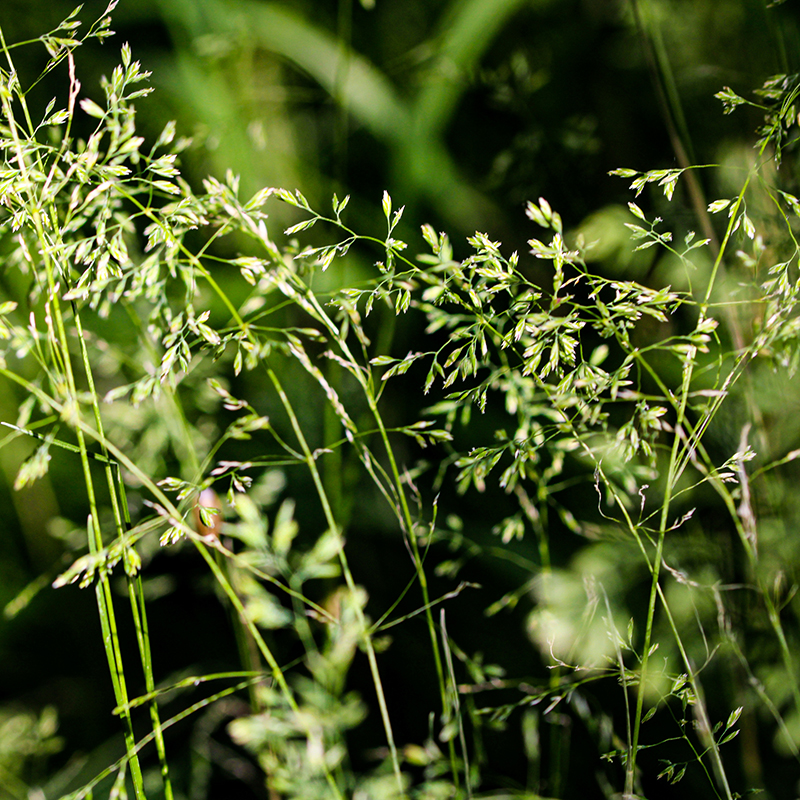
⑪
Deschampsia cespitosa
A native grass that forms neat tussocks of stiff, dark-green leaves and tall sprays of silver-purple, feathery, summer flowers on arching stems that transition to buff by the end of summer. Deschampsia cespitosa is drought-tolerant once established and copes well in contaminated soil.

⑫
Geranium ‘Rozanne’
A vigorous, spreading herbaceous perennial with lobed, marbled, mid green foliage and striking, saucer-shaped, deep purple-blue flowers with white centres from June to September.

